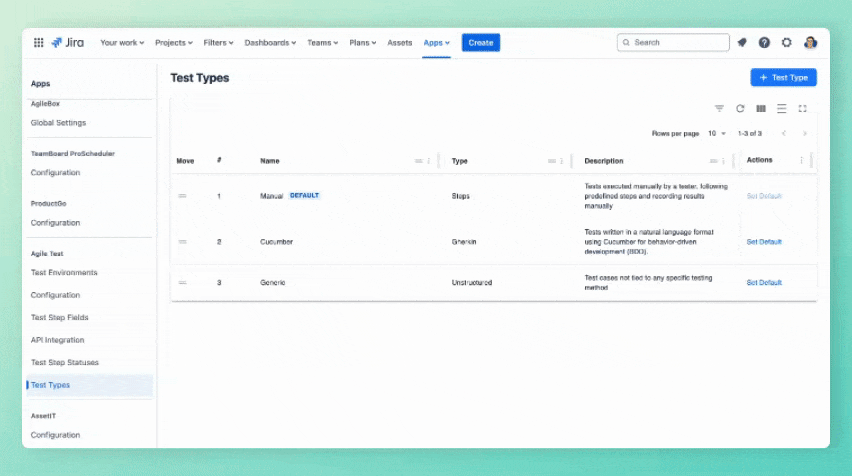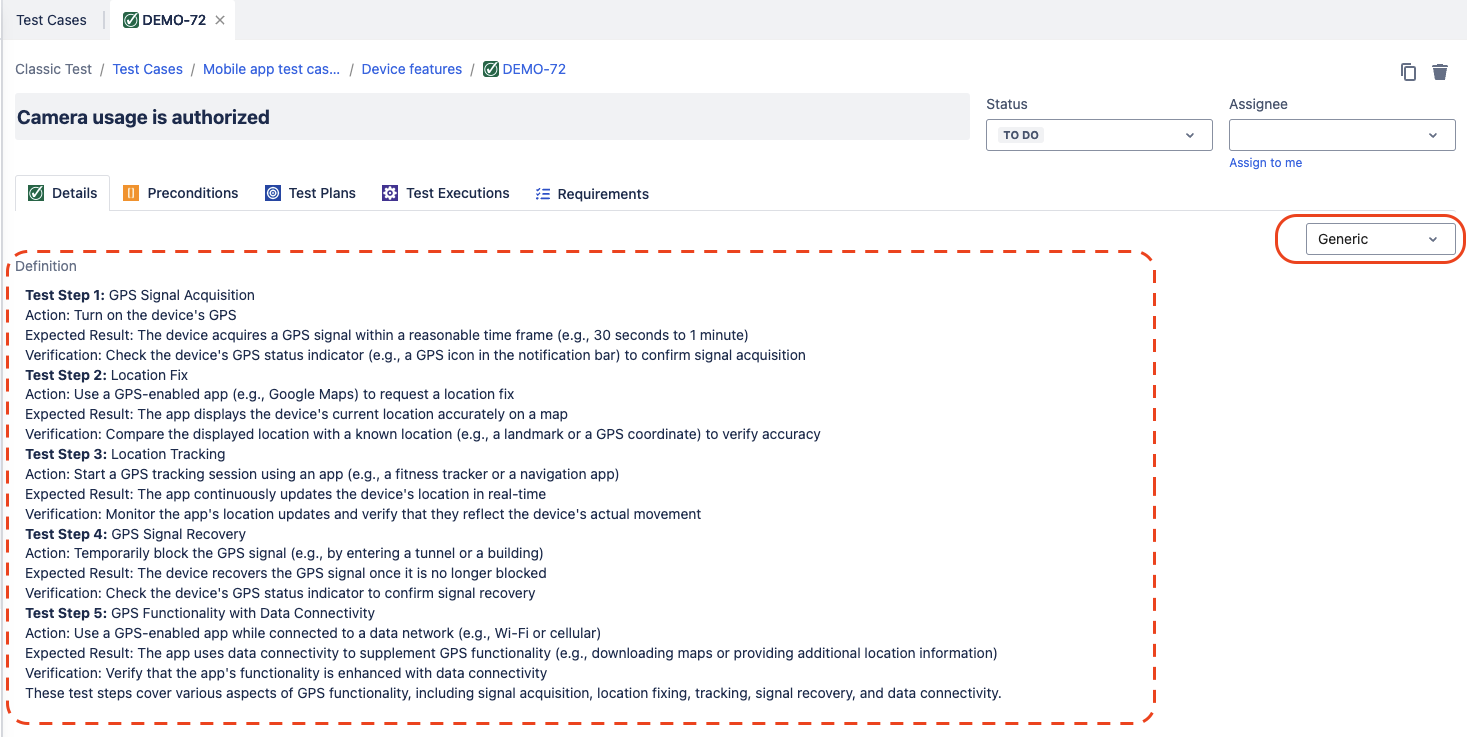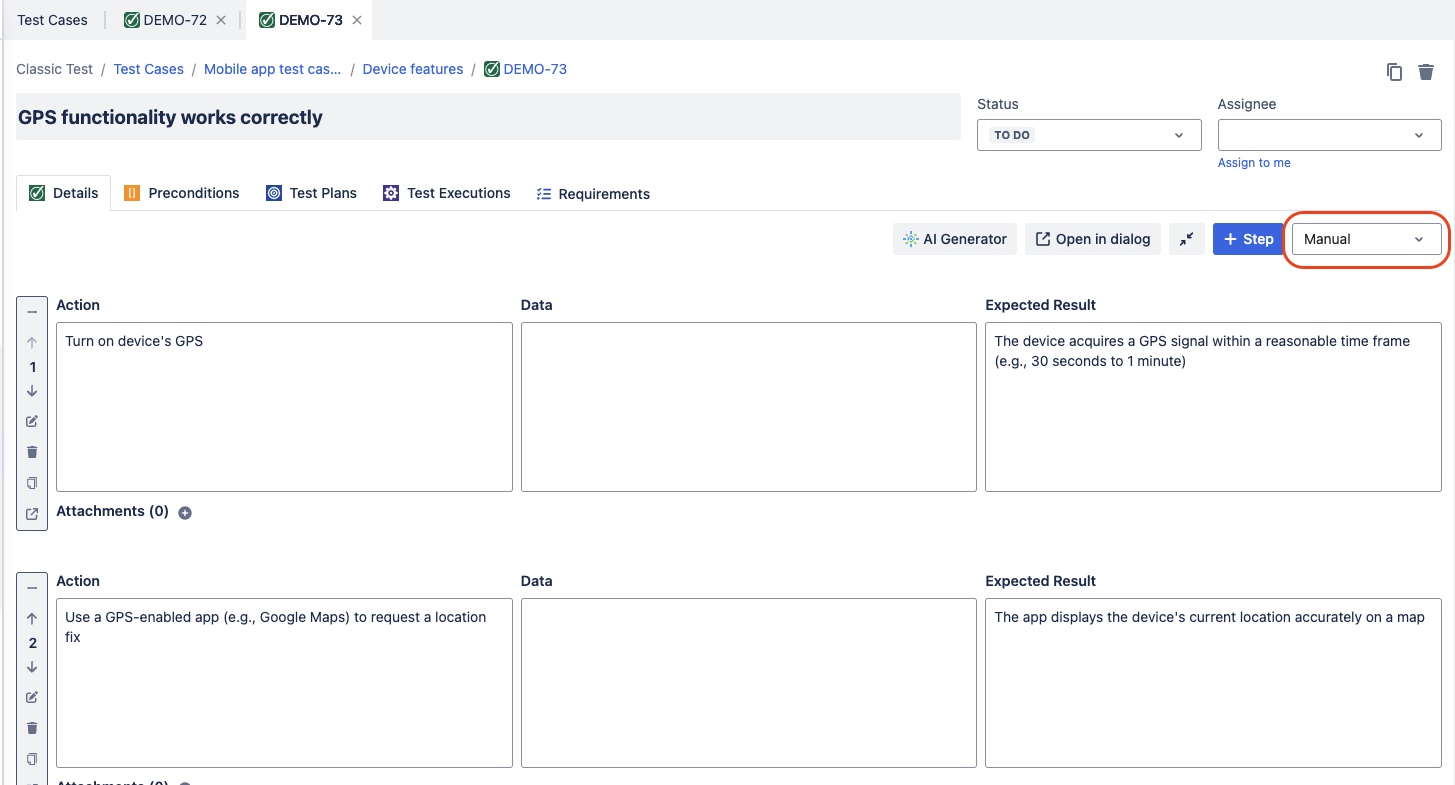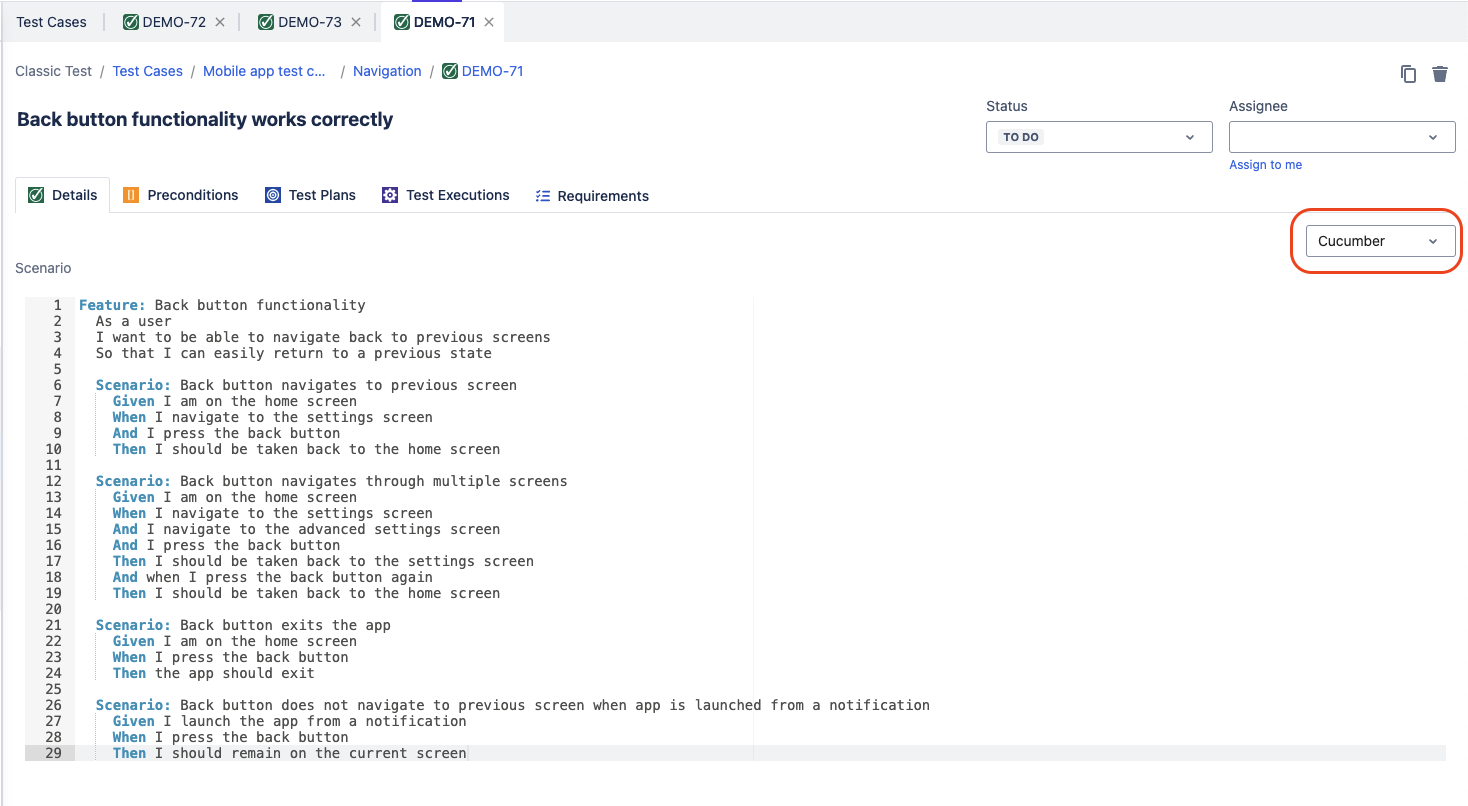Test types
Agile Test supports different test types. Starting with three default test types—Steps, Unstructured, and Gherkin—your team can create and assign new test types to test cases and preconditions. They are included when you clone, import, or export test cases and preconditions.
Test type configuration
Based on three default test types, users could derive more types to meet their needs. To access this configuration, go to ⚙️ → Apps → Agile Test → Test Types.

Example of create/assign test types to test cases
Test case
When to use which type
Test case type | When to use |
|---|---|
Unstructured | For exploratory, legacy, or quick ad-hoc testing. |
Step-based | For detailed, repeatable manual tests (e.g. regression, compliance, training). |
Gherkin | For behavior-driven, or collaborative testing scenarios tied to acceptance criteria. |
Unstructured type
A Test case of this type is usually referred to as Generic tests. These test cases include only a description text field, making them simple and suitable for scenarios that don’t require complex details while still being effective for test execution.

Example of unstructured test
Since these Test cases lack detailed structure and focus on capturing high-level test descriptions, they are suitable for these use cases.
Use case | Description |
|---|---|
Legacy/Test Result Imports | Use when importing test cases or results from external sources (e.g., test automation frameworks or third-party tools) that don’t follow a structured format. |
Exploratory Testing | Ideal for exploratory testing where steps aren’t predefined, and testers document their observations and findings during testing. |
Quick Ad-hoc Tests | Use when defining simple, one-off test cases that don’t require detailed steps or formal structure. |
Low-Criticality Tests | Useful for tests with minimal impact or low complexity, where granular details are unnecessary. |
Advantages
Quick and easy to create.
Flexible and adaptable to any format.
Step type
Unlike unstructured tests, step test cases have a more detailed structure - usually referred as Manual . They include all the key elements of a test case, such as actions, input data, expected results, and attachments, hence provide a comprehensive guide for executing the tests.
In case you need more details, Agile Test offers test step custom fields, which you could find in this document.

Example of manual test
Use case | Description |
|---|---|
Manual Testing Scenarios | Ideal for tests that require clear, step-by-step instructions for execution, particularly for non-technical testers. |
Regression Testing | Use for repeatable and consistent tests that need to be executed in detail across multiple cycles. |
Compliance and Auditing | Required in industries like healthcare, finance, or aviation, where detailed documentation is critical for compliance. |
Training and Onboarding | Helpful for training new team members or documenting workflows for future reference. |
Complex Workflows | Use when testing involves multiple interconnected steps or dependencies that need to be followed precisely. |
Advantages
Ensures consistency and reproducibility.
Easy to follow for manual testers or during audits.
Gherkin type
The Gherkin type, however, retains the standard structure of Gherkin test cases. It consists of a series of Given, When, and Then statements, allowing users to define detailed preconditions. Additionally, all predefined keywords are automatically suggested as you type.

Example of cucumber test
Use case | Description |
|---|---|
Automated Testing | Best suited for tests tied to automated frameworks like Cucumber, SpecFlow, or Behave, where Gherkin scripts directly translate to automated test scripts. |
Collaboration | Use for collaborative testing in agile teams, where both technical and non-technical stakeholders need to understand the test scenarios. |
Acceptance Criteria | Ideal for defining test cases as acceptance criteria during requirement gathering in agile projects. |
Behavior-Driven Development (BDD) | A core part of BDD workflows, focusing on user behavior rather than implementation details. |
High-Level Scenarios | Use for documenting high-level, business-driven scenarios rather than low-level test details. |
Advantages
Promotes clear communication across technical and non-technical team members.
Easily integrates with automation tools.
Focuses on user behavior and business value.
Precondition
Step & Unstructured types
For Step and Unstructured types, the precondition details are provided in a simple rich text area. Here, you can add information about the prior conditions or setup required before starting the tests.

Example of step/unstructured precondition
Gherkin type
Similar to test cases, the preconditions in the Gherkin type function in the same way.

Example of gherkin precondition
User can only link Preconditions to Test cases of the same type.
Should you need any assistance or further AgileTest inquiries, please contact us here!
